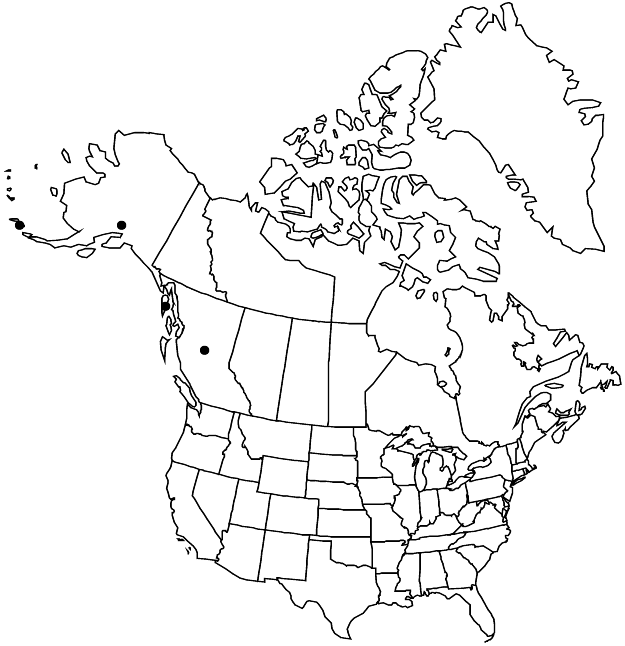Cerastium fischerianum
in A. P. de Candolle and A. L. P. P. de Candolle, Prodr. 1: 419. 1824.
Plants perennial, coarse, forming loose mats or clumps, ± rhizoma-tous. Stems erect to straggling, decumbent at base, sturdy, 10–50 cm, usually densely pubescent with hairs patent, yellowish, multicellular, glandular and eglandular, often subglabrous near base; nodes bearded with long, yellowish hairs; small axillary tufts of leaves usually absent. Leaves sessile, not marcescent; blade lanceolate, 7–50 × 3–15 mm, largest on mid and distal stem, apex usually acute, densely ciliate, hairs yellowish, multicellular, eglandular, of various lengths; proximal leaves with blade lanceolate to elliptic, oblanceolate, or oblong. Inflorescences lax, 2–10-flowered cymes, compact when young, branches elongating at maturity; proximal bracts foliaceous, herbaceous, pubescence as in leaves; distal bracts lanceolate, 5–10 mm, often with scarious tip, ciliate with long, fuscous hairs. Pedicels erect or becoming deflexed at base and curved at apex, 5–30(–60) mm, elongating in fruit, ca. 6 times as long as sepals, densely fuscous-pubescent with glandular and eglandular, patent hairs. Flowers: sepals narrowly lanceolate with round base, 6–10 mm, margins narrow, apex acute, strigose-ciliate, hairs long, fuscous; petals conspicuous, 10–14 mm, 1.5–2 times as long as sepals, apex deeply 2-fid; stamens 10; styles 5. Capsules slightly conic or cylindric, straight, 10–22 mm, ca. 2 times as long as sepals; teeth 10, erect, margins convolute. Seeds reddish brown, 1–1.5 mm diam., strongly papillate; testa not inflated, tightly enclosing seed. 2n = 66, 72.
Phenology: Flowering summer.
Habitat: Grassy areas, lake shores, riverbanks, gravel
Elevation: 0-200 m
Distribution

B.C., Alaska, Asia.
Discussion
Cerastium fischerianum is a distinctive species resembling a large and robust form of C. fontanum. The bush of yellow hairs underneath each node, together with the large flowers, sepals, and capsule, distinguish this species. It intergrades with C. beeringianum, and the intermediate plants often have exceptionally large petals; these have been named C. beeringianum var. grandiflorum Hultén.
Selected References
None.